Best binoculars 2024: Top picks for stargazing, wildlife, birding and more
We've picked the best binoculars for stargazing, nature watching, or seeing events up close; some models will be reduced during the October Amazon Prime Big Deals Day deals.

- Quick list
- Best overall
- Best optical performance
- Best for affordable stargazing
- Best binoculars under $300
- Best budget binoculars
- Best for moon views
- Best mid range model
- Best family binoculars
- Best for magnification
- Best for entry level astronomy
- Best for beginners
- Best for reliability
- Best for daytime use
- Best binoculars FAQ
- How we test
The best binoculars are the perfect companion for anyone who wants to get a closer look at wildlife, sporting events, or concerts. They can even be used for stargazing. Binoculars tend to be cheaper and more portable than telescopes, providing a convenient way of observing the sky during nighttime wanderings.
Binoculars come in different shapes and sizes, but the best binoculars should be pleasant to use, comfortable to hold in your hands, easy to carry and resistant to various weather conditions. What you hope to use your binoculars for will also impact the type you're looking for: If you primarily want to stargaze, for example, you'll want large objective lenses that will let in as much light as possible.
With the guidance of our expert reviewers, we've rounded up the best binoculars currently on the market to suit a range of purposes and buyer budgets. Whether you want the absolute best or have a limited amount of money to spend, our list should have something to suit.
Over the next couple of days, October 8-9, you'll be more likely to find the best prices for your desired pair of binoculars during the October Amazon Prime Big Deals Days. Look at the Celestron Nature 12x56 (that you'll find in this guide), you can currently save $80. Head to our Amazon Prime Day Deals hub for Space.com's top picks of the best deals.
If you're looking for a highly portable pair, take a look at our guide to the best compact binoculars for small and lightweight models. If your little ones want to get involved, we also have a guide to the best binoculars for kids. Those looking to take their stargazing to the next level may also want to check out our guides to the best telescopes and best beginner telescopes.

A contributing expert to Space.com, Live Science, All About Space and more, Gemma is the author of several books including 'Quantum Physics in Minutes'. She holds a degree in physical sciences, a Master's in astrophysics and a PhD in computational astrophysics and became fellow of the Royal Astronomical Society in 2011. Gemma is also the Communications and Outreach Office at the European Space Agency.
The quick list
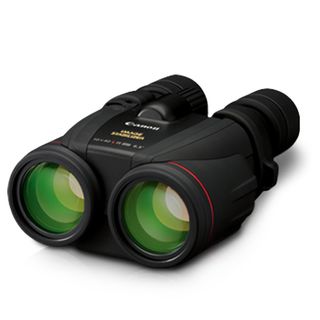
Best binoculars overall
The finest stargazing binoculars money can buy with in-built stabilization. As close to perfection as you’ll get for handheld astronomy.
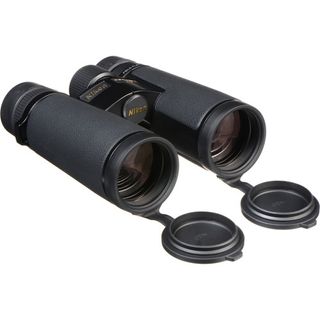
Best optical performance
Some of the best optics on the market in an easily transportable roof prism design. A premium product at a premium price.

Best for affordable stargazing
They offer bright and clear views, with a wide aperture for gathering light and magnification that is excellent for stargazing and wildlife spotting.
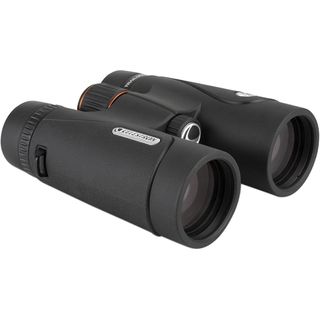
Best binoculars under $300
The TrailSeeker 8x42’s minimalist design makes them a hugely more attractive option than large and heavy deep-sky astronomy-centric binoculars.
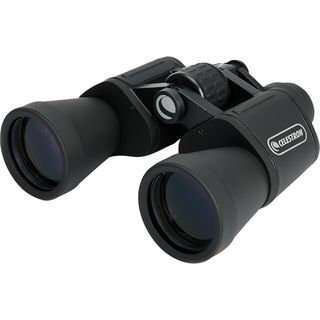
Best budget binoculars
Best thought of as a great value pair of entry-level binoculars for all-round use and for occasional night sky views.
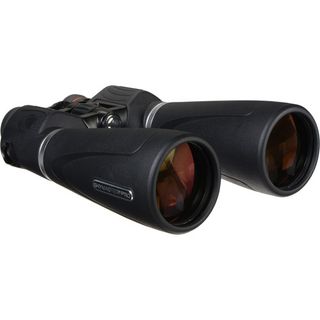
Best for moon views
These binoculars give a superb stargazing experience at a reasonable price. Fantastic magnification for lunar viewing.
Load the next 7 products ↴
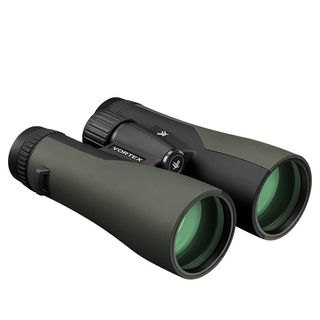
Best mid-range model
The pair you need if a wide field of view and a good sturdy build quality top your brief.
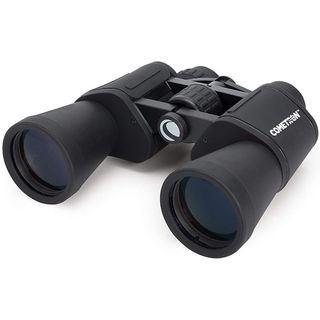
Best family binoculars
Surprisingly good optics make these attractive to adults and kids alike. Considering what and who they're for, for the price, they're hard to beat.
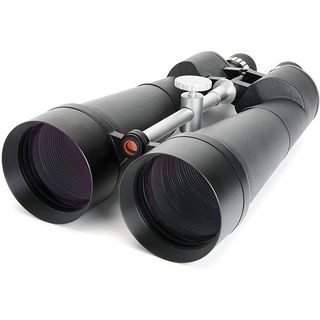
Best for magnification
See the universe close up and in stereo, but don’t plan to hike with them as they're big and heavy.

Best for entry-level astronomy
Ideal for anyone just starting out in stargazing. A sleek and well made binocular model with optics to boot.
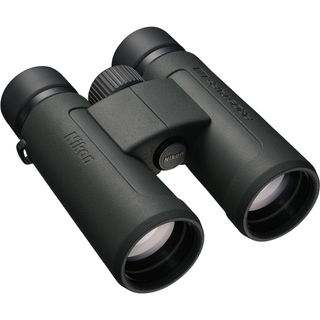
Best for beginners
Slender and lightweight, these are ideal for beginners and hobbyists who need a 'go-anywhere' binocular.
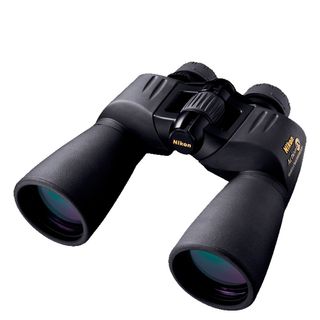
Best for reliability
With high magnification and excellent light-gathering abilities, these binoculars are built to last.

Best for daytime use
These combine the best of both worlds. They're excellent for daytime use but could equally be used for night-time stargazing.
Best binoculars we recommend in 2024
Why you can trust Space.com
Best overall




Specifications
Reasons to buy
Reasons to avoid
✅ You want the best of the best: Other than price and size, we really couldn't find major fault with these binoculars — we gave them 5 stars in our review.
❌ You're a casual user: These are an expensive pair of powerful binos, so if you're a casual sky-watcher or wildlife spotting, they'll be overkill.
❌ You want a lightweight binocular: These are undeniably heavy and bulky, so if weight is important to you, we'd suggest looking elsewhere.
🔎 Canon 10x42L IS WP binoculars: They're not perfect, but they’re as close as you’ll get for hand-held astronomy. They're an outstanding choice for super-steady stargazing thanks to their image stabilization, waterproof design and large objective lenses. ★★★★★
For hand-held astronomy, the Canon 10x42L IS WP binoculars are among the best you can get. Their standout feature is Canon's Optical Image Stabilization (IS). This clever technology uses gyroscope motion sensors to detect arm movements and a vari-angle prism to correct them by up to 0.8 degrees. With the push of a button, you can eliminate the movements caused by your hands shaking and get a steady image. This comes in particularly handy during long viewing sessions when your arms might get tired.
The Canon 10x42L IS WP use premium L-series glass with Canon's multi-layered anti-reflective lens coating (known as 'Super Spectra') to increase light transmission and reduce lens flare. This ensures a bright and clear view with accurate color reproduction. During our Canon 10x42L IS WP binoculars review, we were really impressed with the incredibly sharp image which featured no chromatic aberration, which is just what you need for observing stars.
The main downside to the Canon 10x42L IS WP binoculars is that they are, unfortunately, rather power hungry — but that's the same with any binos with high-tech features. Here, it's the IS system that requires so much power: We got through several AAA batteries in just one sky-watching session, so you'll need to bear that in mind if you're considering purchasing these and make sure you're well stocked-up on batteries every time you venture out. It's extra weight and bulk to carry around with you, and something else to think about when you're packing up your gear. We'd say that overall the Image Stabilization is worth it, though.
We also weren't wholly satisfied with the accessories provided with these binoculars, especially considering the price point. We struggled to get the one-piece lens caps to stay in place, and the carry case was a bit basic and flimsy, so you might want to upgrade it. But overall, these are still the best stargazing binoculars on our list thanks to the astronomy-centric glass and clever image stabilization feature.
- Read our Canon 10x42L IS WP binoculars review
| Attributes | Notes |
|---|---|
| Design | Rugged build quality, but bulky. |
| Performance | Produce bright and colorful images. |
| Functionality | Optical image stabilization. |
Best optical performance





Specifications
Reasons to buy
Reasons to avoid
✅ You want some of the best on the market: If you're prepared to pay for them, these binoculars have a premium finish and deliver stunning optical performance. They'll last you for years to come.
❌ You specifically want image stabilization: This may be the only thing missing from this pair of binos, so if that's important to you, there previous option in this guide might be better for you.
🔎 Nikon Monarch HG 10x42: A premium package with a premium price, these binoculars are not ideal for beginner users unless you have deep pockets or a real passion for wildlife- or sky-watching that you plan on pursuing for years to come. ★★★★½
Optics don't get much better than those on the Nikon Monarch HG 10x42 binoculars. But it's no surprise, when these binos come from Nikon, a brand synonymous with cameras and high-quality optical equipment. The Monarch HGs use a Field Flattener Lens System, which ensures that images are sharp all the way across the field of view and not just at one specific point. Coupled with their Extra-low Dispersion glass, which practically eliminates chromatic aberration, these binoculars are very hard to beat indeed.
During our Nikon Monarch HG 10x42 review we tested these binoculars in a range of challenging conditions and were pleased with the results every single time. Light transmission is good because the 42mm objective lenses are large enough to allow light to pass through even in twilight hours. Every single glass element also contains multilayer coatings to help improve the transmission of light, which Nikon reported as being 92% or higher.
Whilst they're undeniably pricey binoculars, we feel you're getting real quality for your money with this pair. Everything about them feels premium. The magnesium alloy body is slim and lightweight enough to slip into a coat pocket, but they feel balanced in the hand and come coated in a grippy rubberized armor. They're also entirely waterproof, so you don't need to worry about getting caught out in bad weather, and they're nitrogen-filled to prevent fogging as well.
Even the accessories feel high-quality. These binoculars come with a cushioned neck strap, objective lens caps and a premium carry case that has a secure safety catch to prevent them from falling out during transit (no relying on velcro here). We also enjoyed other unexpected details like the locking mechanism on the diopter adjustment ring which means it can't get accidentally knocked out of place. The only thing they lack is image stabilization technology.
| Attributes | Notes |
|---|---|
| Design | Premium finish all over. |
| Performance | Razor sharp views from edge to edge. |
| Functionality | Only way to improve would be inclusion of image stabilization. |
Best for affordable stargazing





Specifications
Reasons to buy
Reasons to avoid
✅ You want to take them anywhere in any weather: They were created with the outdoor enthusiast in mind, and they're waterproof and fogproof so you can use them anywhere.
❌ You want to use them for prolonged periods: They may become quite heavy if you plan on using them for long periods.
🔎 Celestron Nature DX 12x56: They offer bright and clear views, with a wide aperture for gathering light and excellent magnification for stargazing and wildlife spotting. ★★★★½
The Celestron Nature DX 12x56 binoculars are a great deal for under $250, perfect for casual wildlife spotting, bird watching or stargazing. The build quality is fantastic: They have a full rubber housing and they're completely waterproof, fogproof and nitrogen-purged. The Nature DX 12x56 binoculars include a tripod mount that could be useful for longer viewing sessions and a rain guard that protects the lenses from getting watermarked.
The focus knobs turn smoothly and easily. During our Celestron Nature DX 12x56 review, we appreciated that the binoculars can focus on objects less than 10 feet away, making them great for spotting wildlife in your backyard. If you wear glasses, you'll appreciate the
Despite coming in at under $250, we think the optics on the Celestron Nature DX 12x56 binoculars are comparable to some more expensive models. That's because they have multi-coated optics and BaK-4 prisms, which are generally regarded as being the best. The Nature DX are only let down by their lack of sharpness, which may be disappointing for more advanced or professional users, but if you're a casual user we think these binos are amongst the best you can buy.
If you want a high-quality pair of binoculars for bird watching or wildlife watching and can forgo some level of sharpness that more expensive models can provide, these are attractive. They are also suitable for sky watching and, thanks to the rubber armoring, are hardy enough to be taken anywhere without worrying about the elements.
- Read our Celestron Nature DX 12x56 review
| Attributes | Notes |
|---|---|
| Design | Fogproof and waterproof. |
| Performance | Bright images even when observing in low light. |
| Functionality | A little heavy for prolonged use. |
Best binoculars under $300





Specifications
Reasons to buy
Reasons to avoid
✅ You want to travel with them: We found these binos were lightweight enough to travel with them easily, although perhaps not the best for prolonged periods of handheld use.
❌ You're serious about astro: These binos lack the magnification needed for dedicated astro use, particularly for observing deep sky objects.
🔎 Celestron TrailSeeker 8x42 binoculars: Traveling stargazers will love them as they work well after dark and strike a balance between quality, affordability and portability. The TrailSeeker 8x42’s minimalist design makes them a more attractive option than large and heavy deep-sky astronomy-centric binoculars ★★★★½
We think the Celestron TrailSeeker 8x42 binoculars make a great pair for amateur astronomy, whilst also having the flexibility to be used for a range of other pursuits. Their price point sits just above the more affordable mass-market binoculars, and this means that you get high-quality BaK-4 glass and multi-coated optics, as well as waterproofing and nitrogen purging to make these binoculars safe to use in any weather conditions.
In our Celestron TrailSeeker 8x42 binoculars review we were very pleased with the build quality on these binoculars. They're constructed from a lightweight magnesium frame with rubber coating for grip and protection. They also come with a useful range of accessories, including a thick and comfortable neck strap, a padded carry case and an innovative harness strap that spreads the weight of the binoculars over your shoulders for longer viewing sessions.
If you're looking for good binoculars for stargazing, the Celestron TrailSeeker binoculars — despite coming from Celestron — might not be the best choice on the market thanks to their 8x magnification and 42mm lens diameter. Ultimately, they're at the lowest useful end, so while they're not completely useless, you won't be able to enjoy any views of deep space. We have found them capable of offering adequate views of star clusters and the Milky Way, however, thanks to their wide viewing angle.
It's also worth noting that the TrailSeeker 8x42 binoculars don't have Extra-low Dispersion (ED) glass, so we experienced a fair bit of color fringing, particularly when viewing bright objects such as the moon. It's not a surprise at this price point, however — and Celestron do have a model with ED glass, but as you'd expect it's notably more expensive.
Their specifications make them an entry-level choice in some ways; you wouldn’t want to go any lower than their 8x magnification and 42mm objective lens size. Although the TrailSeeker 8x42 are good all-rounders, 10x50 binoculars remain the sweet spot for stargazing.
Glasses-wearers will also find this pair easy to use thanks to their generous 17mm eye relief, which can be set in three different positions depending on your preference.
| Attributes | Notes |
|---|---|
| Design | Fogproof and waterproof. |
| Performance | Good quality optics, slight color fringing. |
| Functionality | Wide field of view. |
Best budget binoculars





Specifications
Reasons to buy
Reasons to avoid
✅ You're a beginner: If you've used binoculars before, then these are unlikely to impress you, but they're perfectly suited to beginners.
❌ You specialize in astro: While they do give decent views of the night sky, anyone focusing solely on astronomy would likely want to go for a more powerful pair.
🔎 Celestron UpClose G2 10x50 Binocular: A great value pair of binoculars, well suited for entry-level and all-round use. They're also great for occasional night sky use and are easy to set up, use and adjust. If you're an astronomer on a budget, these are a decent choice, although we do question their longevity. ★★★★½
These are affordable skywatching binoculars that would be ideal for anyone just starting out who wants to get the most for their money.
In our Celestron UpClose G2 10x50 binocular review, we found the moon looks amazing through these binoculars, easily fitting into the view with just a hint of false color. In July 2020, the UpClose G2 10x50 binoculars were very effective in spotting the naked-eye comet C/2020 F3 (NEOWISE). We managed to spot three stars within the Trapezium Cluster near the center of the Orion Nebula (Messier 42), but you'd need a pair with higher magnification if you want to see the fourth bright star in this star-forming area.
If you're on a budget, then, the UpClose G2 10x50 binoculars are a fantastic choice, particularly if you're just starting out on a stargazing hobby. They're light enough to carry around and if you're out trekking, they're ideal to throw in a backpack without adding too much extra bulk.
They're not all perfect, though; of course some corners have been cut considering the price. We've discussed the pitfalls in more detail in our review, but you'll need to adjust the alignment of the lenses (collimation) for one.
They aren't waterproof, either, and they haven't been nitrogen-purged, so we wouldn't recommend using them in inclement weather. While the rubber armor and aluminum housing is labeled as water-resistant, we certainly wouldn't like to push our luck with them. They're liable to fog up in the cold — although they were fine during a two-hour session in near-freezing conditions.
| Attributes | Notes |
|---|---|
| Design | Basic build design and quality. |
| Performance | Surprisingly little chromatic aberration. |
| Functionality | Needs greater magnification for astro. |
Best for moon views

